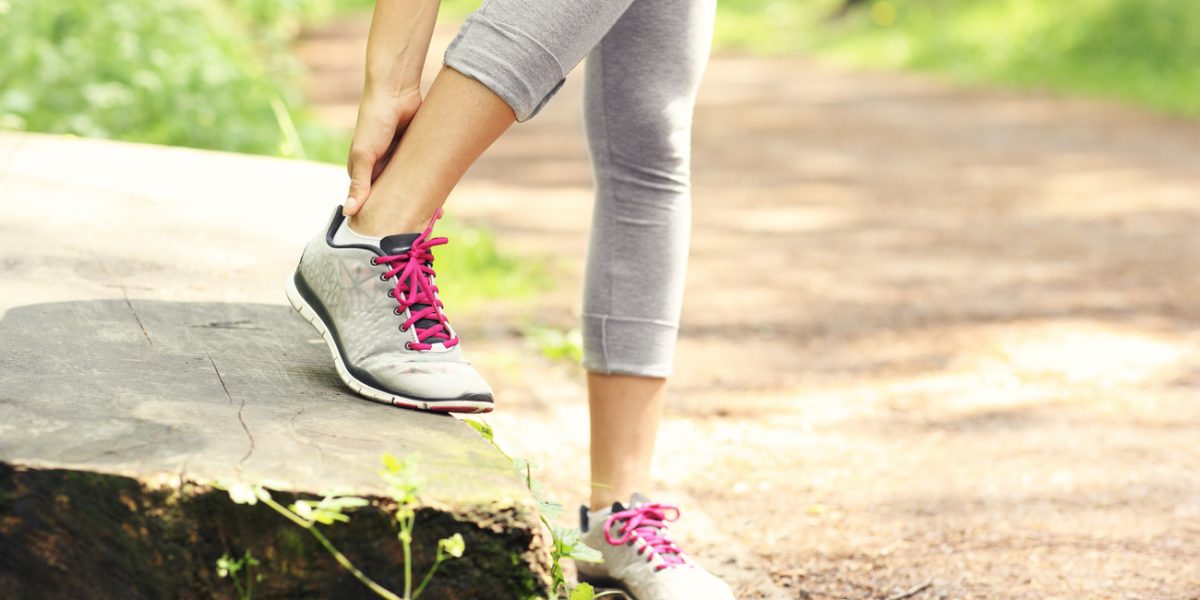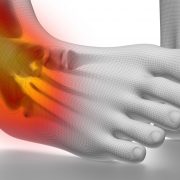
North Carolina residents know hot—and humid. Summers are no joke, especially when it comes to trying to run or exercise outdoors! Steamy weather, however, is not the only barrier to enjoying athletic activities outside. Ankle pain when running, jumping, and hiking can stop many people in their tracks.
Thankfully, the kinder and cooler temps of autumn are on the way. And, as for any ankle pain, swelling, or other symptoms, the EmergeOrtho—Triangle Region subspecialty orthopedic Foot and Ankle Team has you covered.
Help Avoid Ankle Pain When Running Outdoors
The fall season provides a reprieve from toasty temperatures and an opportunity to embrace all that the Triangle Region has to offer. Runners can challenge themselves to a cross country experience on The Al Buehler trail, or run the Lower Neuse Greenway to see the sunflower fields. Running adventure opportunities are practically limitless.
To ensure a pleasant outdoor run, wherever you decide to enjoy the splendor of an autumn in North Carolina, it is important to understand the most common causes of ankle pain. Runners are often susceptible to ankle injuries such as:
- Ankle Fractures
Stress fractures are one of the most common types of ankle injury experienced by runners. In fact, 16% of all ankle injuries result in stress fractures. Fractures occur from overuse, or when the ankle experiences an unexpected twist or roll. Pain, swelling, bruising, tenderness, and difficulty with weight bearing are common symptoms of an ankle fracture. - Achilles Tendon Injury
The Achilles tendon that connects the calf muscles to your heel bone and is the largest tendon in the body. According to studies, males are more prone to Achilles tendon injuries as are runners with a prominent forefoot strike. The Achilles tendon can tear, rupture, or become inflamed (Achilles tendinitis). In addition to being extremely painful, an Achilles tendon injury can cause stiffness, pain that worsens with activity, bone spurs, and thickening of the tendon. - Ankle Sprains
When the ankle ligaments become overstretched or experience a tear, the result is a sprain. Ankle pain and swelling are the most common side effects of a sprain. Patients may also have bruising and instability of the ankle. - Ankle Impingement
Accounting for approximately 15% of all ankle injuries, ankle impingement is a common condition experienced by downhill running. The most common symptoms are pain and swelling.
At EmergeOrtho, we provide several treatment options for ankle pain. With significant experience treating athletic patients of all skill levels, our board-certified, fellowship-trained orthopedic surgeons offer a variety of conservative treatment methods as well as surgical options—depending on the injury.
Our specialists are also committed to helping provide preventative strategies. Ultimately, we want to protect you from having an ankle injury in the first place!
Stay Safe on Your Favorite Treks and Trails
Following a few simple steps can help prevent ankle pain and injury when you run on your favorite trails this fall.
- Vet Your Running Path
It is best to run on surfaces that are more pliable and clear. If you do run hills or on rocky terrain, try to do so sparingly. These types of activities may place increased stress on the ankle and foot. If you run on a curve, try reversing directions at the halfway point of your route/track to ensure pressure is even on both feet. - Plan a Warm-up and Cool-down Routine
A few simple jumping jacks and stretches before your run, warm up your muscles. Cool and stiff muscles make for a higher risk of injury. Add a stretching component to your post-run routine. Calf stretches often simultaneously stretch the muscles, ligaments, and tendons in the ankle. - Wear the Right Kind of Shoes
Shoes lose their shock absorption after 250 to 500 miles of use. Pay attention to how long you have had your running shoes, and replace them when needed—often between 9 to 12 months. It is crucial to select running shoes that cushion your foot and offer optimal shock absorption. Many specialty running-shoe stores can help you evaluate the best kind of running shoe for your gait and style of running.
How to Treat Ankle Pain
Consulting with an orthopedic physician who specializes in foot and ankle conditions and injuries is one of the best strategies a runner can use. EmergeOrtho—Triangle Region doctors utilize state-of-the-art technology and approaches to evaluate your ankle, and determine the root cause of pain. And
To learn more, self-schedule an appointment now. Or, call us any time at (919) 220-5255.









